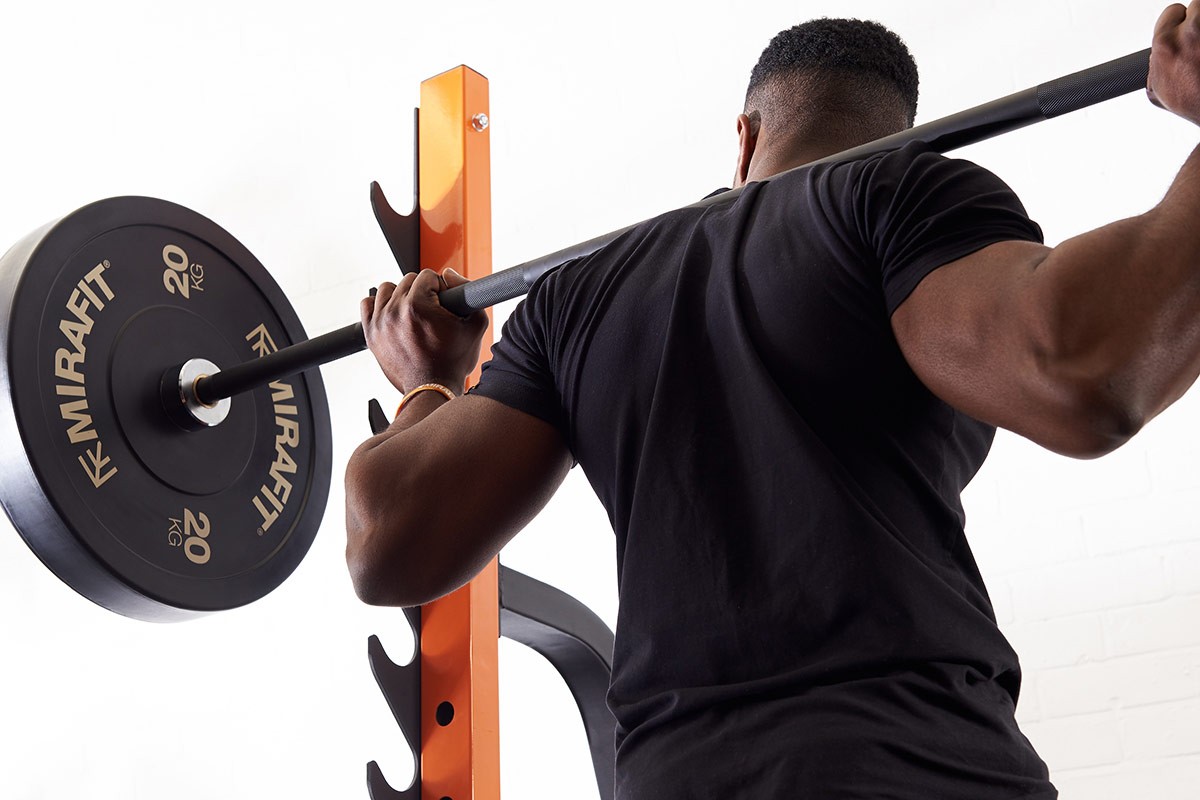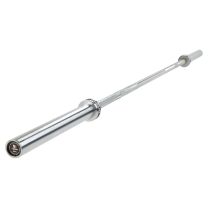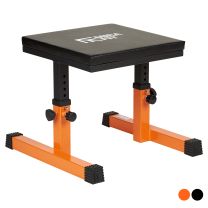What exercises can you do with a squat rack?
What exercises can you do with a squat rack?

The king of compound exercises, squats are one of the key exercises you should be doing in the gym.
Not just great for hitting several muscle groups at once, they’re also one of the heaviest lifts you can do down at the gym. So, they’re really important for building muscle too.
Squats are also quite complex and perfecting your squat form can take years to master.
There’s a lot to them and getting to a proper squat depth is enough of a challenge in itself.
We’ll go through some of the basic points in developing your squat, as well as the different types of exercises you can do with a squat rack.
Why use a squat rack?

Doing squats without a rack – or ‘air squats’ – are great for perfecting your form. They also help you get a feel for doing squats without having to deal with a barbell.
However, there’s only so much strengthening you can do without a weight bar and squat rack.
Barbells are designed to handle large amounts of weight and can be loaded up with weight plates so that you can start to build strength.
And the rack is equally as important: firstly, so that you can unrack the bar straight onto your shoulders without having to lift it straight over your head (which is both difficult and dangerous). And secondly, because you need safety spotter bars to catch the weight bar should you fail or drop the bar. They basically stop any heavy weights from falling on you.
Squat racks in particular are really popular because they take up less room compared to a power rack. Some of them are also adjustable (whereas power racks aren’t) so you can use a shorter weight bar with them. They also give you a bit more freedom to move around.
What’s the best squat rack

There are a couple of things to consider when choosing a squat rack. The main two being how much space you have and also, how much you’re currently lifting.
Our Adjustable Weight Bench and Squat Rack Kit is a great all-rounder and fantastic for those who are starting out, as well as more experienced lifters.
Some of the features include:
Squat rack
• Fully adjustable and can be used with 4ft, 5ft, 6ft and full size 7ft Olympic weight bars.
• Holds up to 250kg and can be used with both cast iron and bumper plates.
• The bar rests and spotter bars are both fully adjustable (13 rack levels and 7 spotter levels) so you can get a bespoke set up that’s right for you.
• Doubles up as a dip station so you can use it to do a range of upper body and core exercises.
• Centre frame adds stability for high-impact training.
• Can be used for squats and benching.
Weight bench
• Holds up to 260kg.
• Suitable for flat, incline and decline work.
• Has six backrest angles and four seat angles so you can customise your set up.
• Provides an extremely sturdy base for training.
• Thick, padded top makes the bench comfortable to use.
Squat rack exercises

Our Adjustable Squat Rack with Weight Bench kit is suitable for a range of exercises including
• Back squats
• Front squats
• Box squats
• Partial squats
• Bench pressing
• Overhead press
• Barbell lunges
• Barbell bent over row
• Dips
• Knee raises
Getting started with a squat rack

If you’re looking to progress to a squat rack, then there are a few things to be aware of
• Bar weight - power racks and squat racks usually take a 7ft Olympic weight bar, which weighs between 17-20kg. If you’re still new to lifting or simply new to doing squats with a full-size bar, it’s recommended you practise doing squats without weight plates at first, just to get a feel for the bar. Concentrate on keeping it at the bottom of your shoulders (for back squats) and not at the base of your neck.
• Getting used to the bar - unless you’ve been lifting for a while, having a lot of weight resting on your shoulders can make them feel quite sore at first. Using a Barbell Squat Pad will really help with this.
• Set your spotters - you should always make sure your spotter bars are at the right height before you start lifting. These are the safety bars situated at the sides of your squat rack. Using just the bar, find out where your lowest point is when you squat. Then set the spotter bars around an inch below this height. Make sure they are even on both sides and locked in place.
• Rack height - make sure the bar is resting at slightly below shoulder height. That means you just have to push up from underneath to unrack the bar, and not do anything dangerous like go up onto tip toes.
• Be progressive - when training, everyone is focused on piling on the weight. However, it’s a good idea to do this gradually rather than try and take your one-rep max on straight away. This is mainly because you want to check everything is in order to avoid injury. By doing squats with a medium weight load (whatever that is for your current ability) you’ll not only prepare your body to take on more weight, but you’ll also be able to check for any potential niggles. These include things like a sore knee or hip joint, perhaps a tight hamstring – that sort of thing. And then, if you do think something’s not quite right, you can stop before you injure yourself.
• Focus on your form - doing squats with a load of weight and bad form spells disaster. Concentrate on your posture and positioning throughout each rep. Check the bar is central, that your feet are wider than your hips and pointing out slightly. Check your spine is straight and that your neck is in-line with your back. And when you come to push up, use your legs and tighten your core. Make sure it is one fluid movement as well. If your form is looking like it’s broken up into two halves where your knees and back are carrying you through the exercise, drop the weight down and work on your weaker spots.
• Make sure the area is clear - before doing any exercise, make sure the actual space around the rack is clear. Bottles, phones and keys need to be away from the space you’re in, as well as spare weight plates and collars. And if you’re using a rack at the gym, make sure there’s no one near your bar. People often use the side of the rack for resistance band work or they might just be getting a plate. It’s always good to double check there’s no one nearby before you unrack your weight bar.
• Wear good footwear - it should go without saying but don’t squat in socks or bare feet. You need a decent grip on the mat so wear a good pair of trainers of weightlifting shoes.
Looking to get started? Check out our feature on 9 ways to use a squat rack to help you build up your training.
You can read our complete guide to squat racks here
For more content, follow us on Instagram, YouTube, TikTok, and on our official Mirafit Facebook page.
Enter your email to signup to our newsletter
Tags: Equipment > Bars & Weight Plates ; Equipment > Squat Racks ; Exercise Type > Strength







